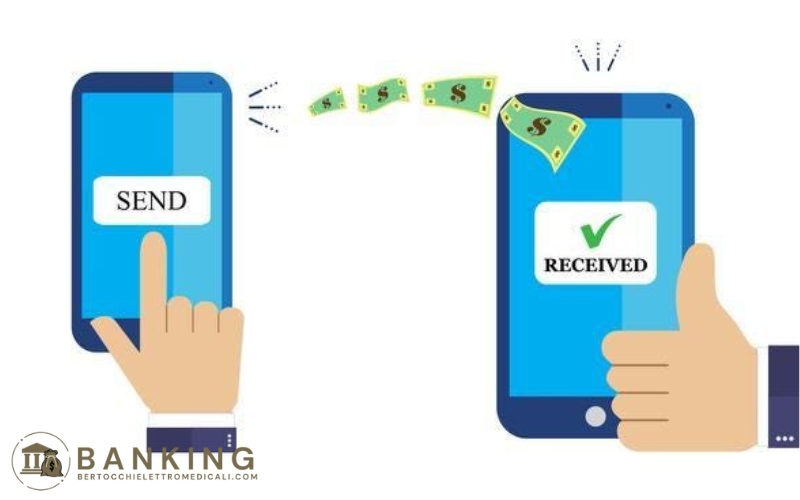Online money transfers have become an indispensable part of modern life, helping users to make financial transactions quickly and conveniently. However, with the development of technology, making online money transfers also comes with risks regarding information security. Therefore, making online money transfers safely and effectively is extremely important. This article will provide a detailed guide on how to make safe online money transfers, helping you protect your account information and make transactions easily.
CHOOSE A REPUTABLE BANK
One of the first important factors when making online money transfers is choosing a reputable bank. Large and reputable banks will ensure high security for your financial transactions. Choose a bank with a strong security system, protecting customer accounts with layers of security such as OTP codes, biometric security (fingerprints, facial recognition), and high-end information encryption.
To know if a bank is reputable or not, you can refer to reviews from previous users, the security certificates that the bank owns, as well as customer support services. A reputable bank will provide you with a safe online transfer service and ensure that your transactions are carried out quickly and securely.

USE STRONG PASSWORDS AND DO NOT SHARE
One of the most important steps to protect your account when making online transfers is to use a strong password. Your password should not be easy to guess, such as your date of birth, the name of a relative, or personal information that can be found online. Instead, use a password that combines letters (upper and lower case), numbers, and special characters. This will help protect your account from hacker attacks.
In addition, you also need to keep your password absolutely confidential. Do not share your password with anyone, including relatives or friends. When entering your password, make sure that no one sees it and do not let your computer or phone automatically save the password.
USE OTP CODE AND TWO-FACTOR AUTHENTICATION
OTP (One-Time Password) is an authentication code that is only valid for a short time and is sent to your phone number via text message or banking application. This is one of the important security measures in online transfers. Before making a transfer, the bank will ask you to enter the OTP code to confirm the transaction. This helps minimize the risk that hackers can get your account information.
In addition, some banks now use two-factor authentication (2FA), requiring users to provide both a password and an OTP code or use biometric recognition technology such as fingerprints and faces to authenticate transactions. This method helps protect your account much more securely than using a simple password.
CHECK THE RECIPIENT’S INFORMATION CAREFULLY
One of the important factors to ensure safety in online money transfers is to verify the recipient’s information before making a transaction. Before transferring money, you need to make sure that the name, account number and information related to the recipient are correct. This will help you avoid unnecessary mistakes, such as transferring money to the wrong person.
In addition, when making transactions via mobile phones or banking applications, you also need to carefully check the information and make sure that you are using the correct official application of the bank. Avoid fake or unknown applications that can steal your information.
USE A SAFE WIFI NETWORK
One factor that cannot be ignored when making online transfers is the use of a secure Wi-Fi network. Avoid making transactions on public or unknown Wi-Fi networks, as they can be attacked by hackers who can steal your information.
Use a private network connection (Wi-Fi with a password) or a 4G/5G mobile network when making financial transactions. This will help protect your data from being stolen by threats from public networks. If necessary, you can use a VPN (Virtual Private Network) service to encrypt the connection and protect personal information when making online transactions.
CHECK TRANSACTION HISTORY REGULARLY
After each online transfer, you need to check your transaction history to make sure that all your transactions are correct. Most banks provide a service to review transactions within several days or even months. If you detect any strange transactions, you need to contact the bank immediately for support and timely resolution.
Monitoring these transactions will help you detect fraudulent or unusual behavior early, thereby protecting your account and money. At the same time, this also helps you manage your personal finances more effectively.
UPDATE BANKING SOFTWARE AND APPLICATIONS
Banks regularly update their software and mobile applications to protect customers from hacker threats. Therefore, you need to make sure that you are always using the latest version of your banking app. These updates often include security improvements and new features that enhance the user experience.
Make sure that you only download banking apps from trusted sources such as Google Play (for Android) or the App Store (for iOS), and do not download apps from unofficial sources that may contain malware.
BEWARE OF FRAUD
Finally, one of the important things to protect online money transfers is to be wary of fake calls, messages or emails. Hackers often use these tricks to scam users and steal bank account information. If you receive a notification from the bank asking for personal information, passwords or OTP codes, absolutely do not follow it. Instead, contact the bank directly via the official phone number to verify the information.
CONCLUSION
Online money transfer is a useful financial tool, helping you save time and effort in making financial transactions. However, to ensure safety, you need to pay attention to security factors such as choosing a reputable bank, using a strong password, authenticating transactions via OTP code and regularly monitoring transaction history. Only when implementing proper security measures can you feel secure in making online money transfers without worrying about threats from hackers.
